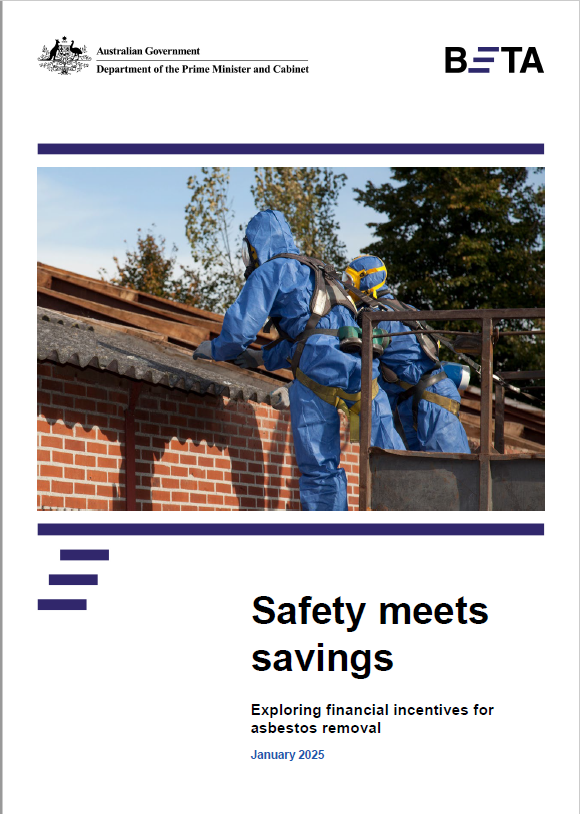Asbestos in Australian homes is getting older and degrading, increasing the risk that harmful fibres are released.
In partnership with the Asbestos and Silica Safety and Eradication Agency (ASSEA), BETA surveyed over 4,400 owners of homes built before 1990, to determine which financial incentives would encourage them to proactively remove asbestos from their properties.
Of the incentives we tested in a discrete choice experiment, homeowners strongly preferred grants – but grants can have economic downsides, like cost inflation. Loans and tax offsets appeared to be marginally effective. Homeowners are likely to respond to programs that clearly communicate their concrete financial benefits.
Our survey revealed that although costs vary widely and can be prohibitive, most homeowners could afford many asbestos removal jobs. Clearly communicating the likely price, process and benefits may clarify that asbestos removal is achievable.
Many homeowners do not know if their property contains asbestos or not. Furthermore, many are not motivated to find out. Incentives that encourage discovery may lead to an increase in asbestos removal rates.
While many homeowners indicated that health concerns would increase their willingness to remove asbestos, our survey also revealed that in practice most homeowners remove asbestos only when renovating. Asbestos removal incentives could be packaged with support for other types of home upgrades (like energy efficiency or disaster preparedness).
If you would like more information about the practical steps you can take to stay safe from asbestos in the home, you can read ASSEA’s:
ADDITIONAL TRIAL INFORMATION
Trial start and end dates: 5 September 2024 to 26 September 2024
Ethics approval: Human Research Ethics Committee (HREC) Humanities and Social Sciences, Macquarie University. Reference: 520241809158945, Project ID: 18091
Pre-registration: The trial was publicly pre-registered on the American Economic Association’s Social Science Registry (AEARCTR-0014411) and on the BETA website.
Research participants: Over 4,400 owners of Australian homes built before 1990
Discrete choice experiment: This research included a discrete choice experiment embedded in a survey delivered online using the Qualtrics platform. The discrete choice experiment tested the impact of 4 different types of financial incentive (grant, tax offset, interest-free loan and lottery) and quoted cost on willingness to remove asbestos. The probability of choosing a particular combination of costs and incentives (0/1) was modelled using a mixed logit model. Choice of a scenario was regressed on a continuous variable for quoted cost, a continuous variable for grant, a binary indicator for tax offset, a dummy-coded indicator for three levels of loan, and a binary indicator for lottery. We reported average marginal component effects (adjusted for intra-respondent reliability) to estimate how changing one feature affects choice probability, holding all other features constant.
Randomised controlled trial: This research also included a 2-arm randomised controlled trial (RCT) described in the remaining sections of this box. Participants were randomised to 1 of 2 arms. Randomisation was done by Qualtrics, by giving each participant a 1/2 probability of being assigned to each trial arm.
Intervention: The intervention was a short paragraph describing the increasing risk of asbestos in Australian homes. The treatment/intervention group received this information before being asked to complete the outcome measure. The control group received the same information only at the end of the study (after completing the outcome measure).
Outcome measures: The primary outcome measure was the price (in $) participants said they could afford to pay if they had to remove asbestos. At the individual level this was asked as a single question, and participants entered a dollar value in response. At a group level this was the mean dollar value in each group.
Minimum detectable effect size: For this study, alpha was set to 0.05, and hypothesis tests were two-sided. Our pilot study revealed a much larger standard deviation (SD) in the outcome variable than initially assumed (SD = $28,599). With this variability incorporated, we calculated the design has 80% power to detect an effect size of $1740 (Cohen’s d = 0.061).


